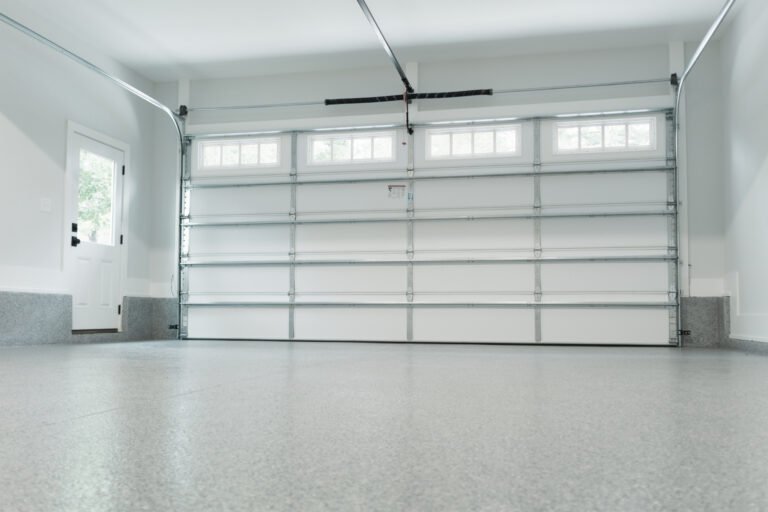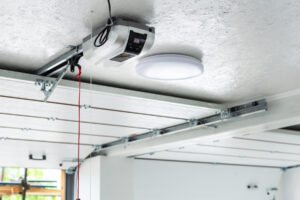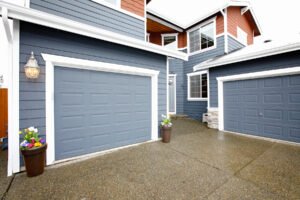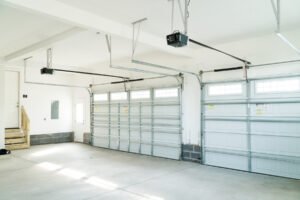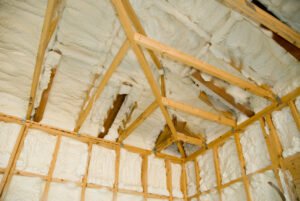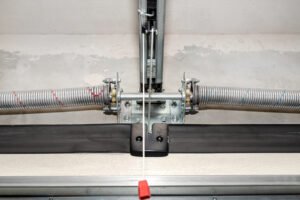Garages feel like a nip in the air as spring finally goes down. Standard metal doors might do little to keep cold air out and heat in, whereas temperature-controlling devices may hike up your energy bill. So, how do you maintain an optimal temperature in your garage or workshop?
One of the most affordable ways is to add insulation material that acts as a radiant barrier to prevent heat loss and ensure a comfortable garage space. But does garage door insulation work? If yes, how long does it last, and how do you maintain it? Let’s analyze it all here.
Benefits of Insulated Garage Doors
A garage door insulation doesn’t only add a protective shield on the door; it also provides a consistent temperature, saves energy costs, and acts as a buffer that keeps adjacent rooms warmer.
But that’s not it! Here are some other benefits:
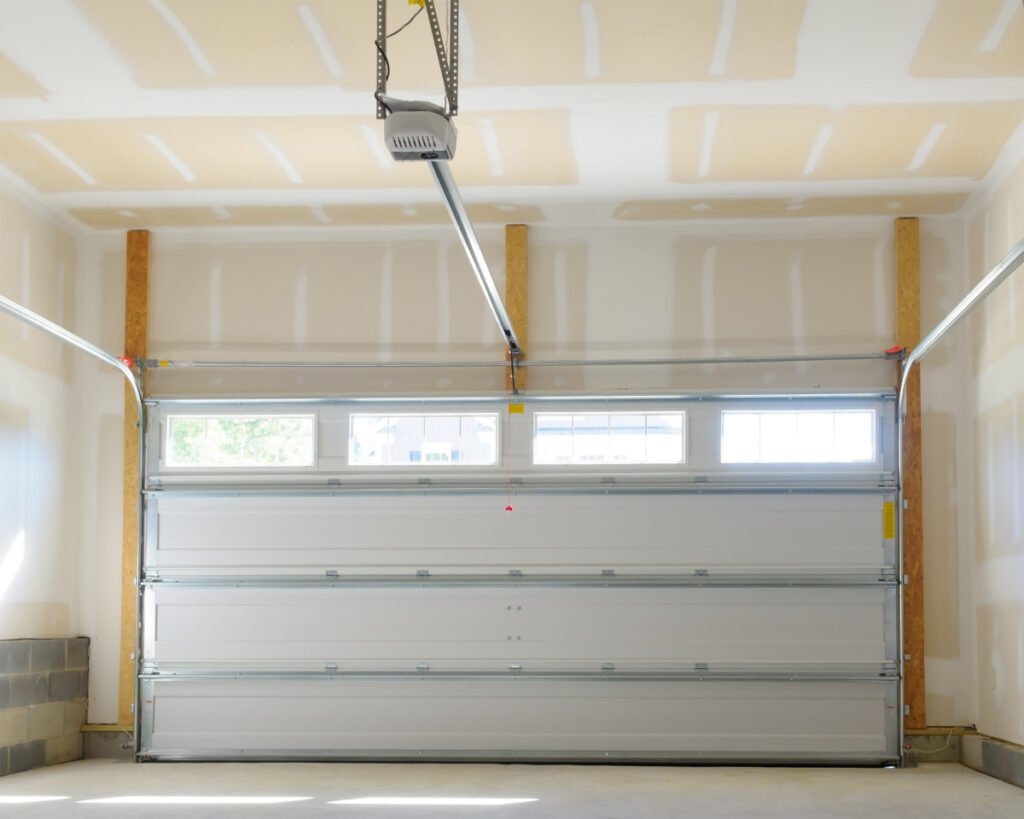
- Acoustic Control: Insulated garage doors prevent external sounds from entering your garages. They also reduce the friction between the opener and the door panel and ensure noise-free door operations.
- Vibration Absorption: The insulation absorbs most disturbances and vibrations from the rollers, chains, and other hardware components and keeps the operation smooth and steady.
- Increased Door Strength: Insulated garage doors are constructed with solid-steel frames and stiffer steel wool insulation, which makes them more durable and resistant to damage from weathering, rusting, and everyday wear and tear.
- Energy Efficiency: Insulated doors are multifunctional. They prevent heat loss in winter and block warm currents from entering your garage in summer, saving air conditioners and electricity bills.
- Controls the House Temperature: An insulated garage door buffers your living space from the surroundings and helps maintain an even temperature despite the outside climate.
- Increased Property Value: Garage door insulation effectively increases the home’s resale value by about 4% and could compensate for about 95% of your investments with regular maintenance.
Drawbacks of Insulated Garage Doors
- Initial Cost: New garage doors with prefabricated insulation generally cost about 1000-2000$ more than a conventional overhead door. The initial cost might seem a bit pricey at the start, but it will save energy in the long run. Alternatively, you can buy a garage insulation kit and add the insulation yourself if you are on a budget.
- Needs a Full Garage Insulation: Insulating a new garage door won’t be enough, and you will need to insulate the garage wall, garage ceiling, and other shutters for a consistent, comfortable temperature.
What is R-Value? And Why Does it Make a Difference To Your Garage Door Insulation?
R-value or the thermal resistance value measures the amount of heat absorbed by an insulating material. Generally, high R-value materials offer the highest heat resistance and insulation for livable garage spaces, whereas low R-value materials resist heat only to a certain extent but insulate detached garages efficiently.
Recommended R-values for insulated garage doors:
- Uninsulated Garage Doors to R-6: Low R materials such as fiberglass or polyurethane do not conduct heat efficiently, but you can use them as a cost-effective option door and wall insulation option.
- R-6 to R-9: These materials, such as polystyrene and wool, are average-level insulators, and you can use them to maintain a comfortable temperature in an attached but unconditioned garage.
- R-9 to R-13: Medium R materials like spray foam and foam board are good insulators for closed, air-conditioned garages that need a sealing space to maintain the quality and temperature of air inside.
- R-13 and Higher: High R-value materials like rigid foam and wood are excellent garage door insulators if you plan on converting them to a livable deck or workshop. They will keep the space noise-free and vibration-free and offer the utmost comfort.
Which Type Of Insulation is The Best For Garage Doors?
Garage door insulations come in various materials, sizes and R-values. While rigid foam or spray foam insulations offer you the best acoustic and temperature control, other insulators like fiberglass and cellulose are relatively cheaper and more efficient.
However, avoid using liquid insulators like injection foam as it does not fit nicely onto the shutter panels.
1. Fiberglass Insulation
Fiberglass insulation is available as pre-cut panels in the market, and it’s very easy to cut and install them between your joists and shutter boards. Typically, they are effortless to handle and give a finished look but can warp with moisture and break easily if not maintained properly. Thus, they are great for detached garages with just a parking facility.
Wrap your fiberglass panels with a thin, plastic film before installing for a polished, shiny look and a dust-free surface.
2. Cellulose Insulation
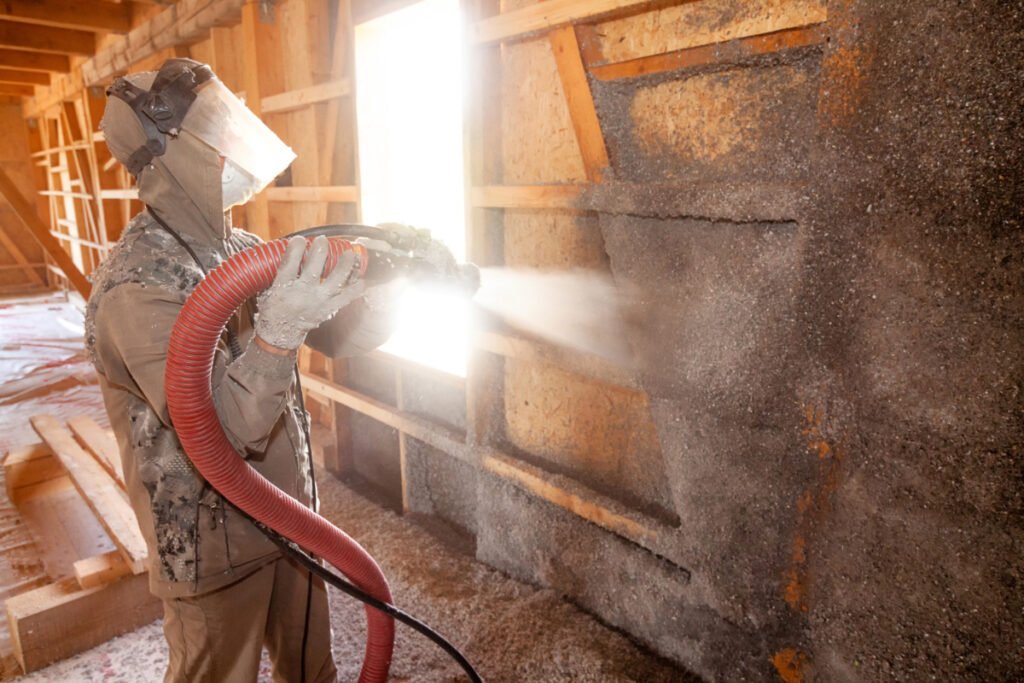
Cellulose is a powder-like insulator made from waste newspaper pieces and fire-resistant powder. It can insulate any side-opening or carriage-style garage door with many framing members that hold the powder together. Though the material ranks well in acoustic, it can set over time, leading to small grapes and cracks on the insulating surface.
Hence, it’s advisable to limit cellulose to stand-alone garages or against the dry-wall sidings of your garage door for easy maintenance.
Cellulose is a tricky material and may slide down immediately if kept wet on the surface. Hence, it’s advisable to dry it using blowers and aerators after application for a smooth surface.
3. Rigid Foam Insulation
Rigid foam has the highest R-value and is a great option to provide sound and moisture control to attached garages. These panels come in 4-inch thick, 8 X 4 feet sheets and can easily fit any size and type of garage door.
However, rigid foam insulation creates a very tight air seal and requires proper air-conditioning or clerestory windows for adequate ventilation.
Do not use a foam-board insulated garage door if you plan to use your garage as a workshop for welding and other craftsmanship activities, as it might burn and cause a mishap.
4. Reflective Insulation
Surprisingly, reflective panels do not have any R-value, but they reflect all the incident light that falls on them. However, while doing so, they might warm up the garage door’s hardware and other metal components and cause them to wear out eventually.
Nevertheless, they are pretty inexpensive and flexible, adapting well to small-scale residential garages and even large-scale commercial garage doors.
Always install some air gaps or foot ventilators on the reflective side of the insulation to increase its overall energy efficiency, and cool it naturally.
5. Spray Foam Insulation
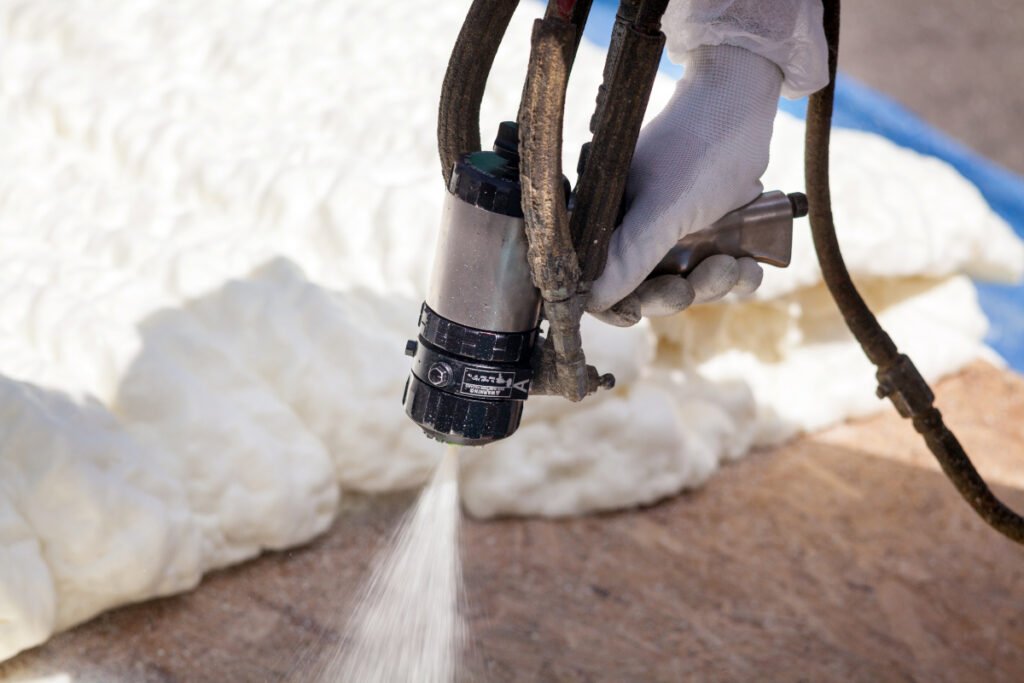
Spray foam is a low-expanding, tight air seal product that insulates well against heavy dust and noise, thus, being a suitable door insulator for garage workshops and activity spaces. Spray foam has a high R-value and can effectively cover all the shutter and door gaps, but it is pricey and challenging to install.
Always level the spray foam with a good quality metal leveler to maintain a uniform surface and prevent uneven shrinking.
6. Expanded Polystyrene Foam Insulation
Polystyrene foam is a flexible, low-cost material that insulates the door trims, gaps, and other openings of a garage door and creates an airtight seal that maintains an even temperature inside.
The material has a low R-value, about 4.6 inches per thickness, but prevents the weathering of the door due to moisture and heat.
7. Extruded Polystyrene Insulation
Extruded polystyrene boards not only insulate against sound, climate, and moisture but also come in an array of aesthetically pleasing and furnished colors. In addition, extruded polystyrene has a low R-value, about 5 per inch thickness, and thus, it is the right tap for detached garages with no activity other than parking.
8. Fiberglass Batt Insulation
Fiberglass batts are soft, thin, and flexible sheets of weaved glass threads and are a great option to insulate upward rolling or sectional garage doors. They come in 1.5 to 2-inch sheets and have a moderate R-value of 6.45, maintaining an optimal temperature for attached but air-conditioned garages.
9. Rockwool Batt Insulation
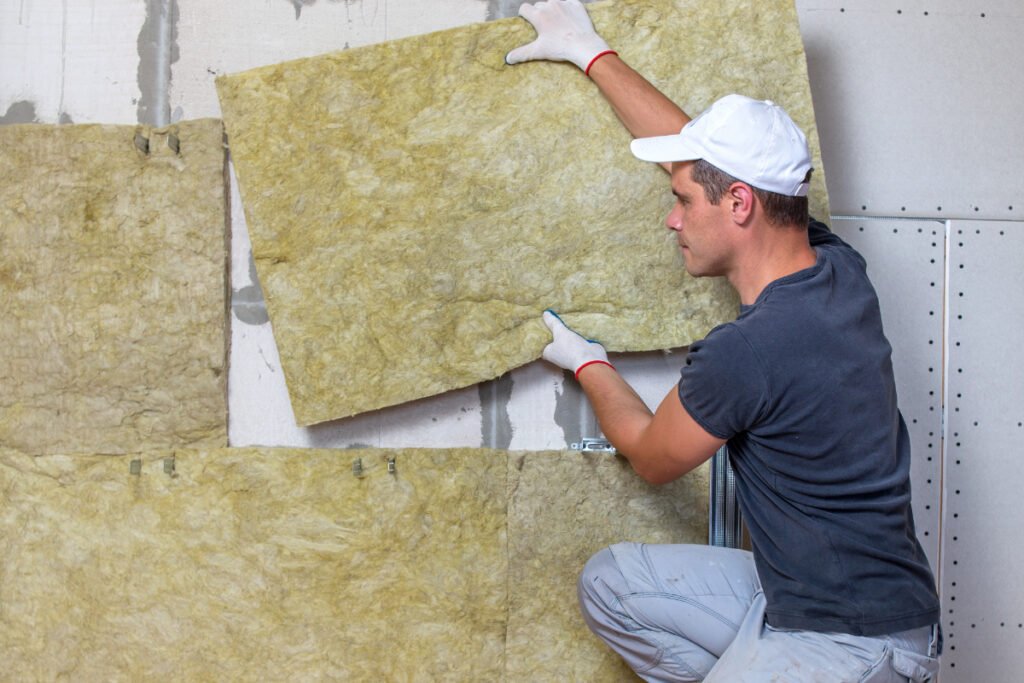
A fiber-like rock wool insulation, mineral insulation, or slag insulation has a moderate R-value of 5.16, but it heats much faster and prevents energy loss. However, Rockwool is a powder-like substance, and hence, it requires wooden batting and planking to hold it properly and cannot insulate steel sectional or overhead doors.
What Type of Garage Doors Can You Insulate?
Can You Insulate A Wooden Garage Door?
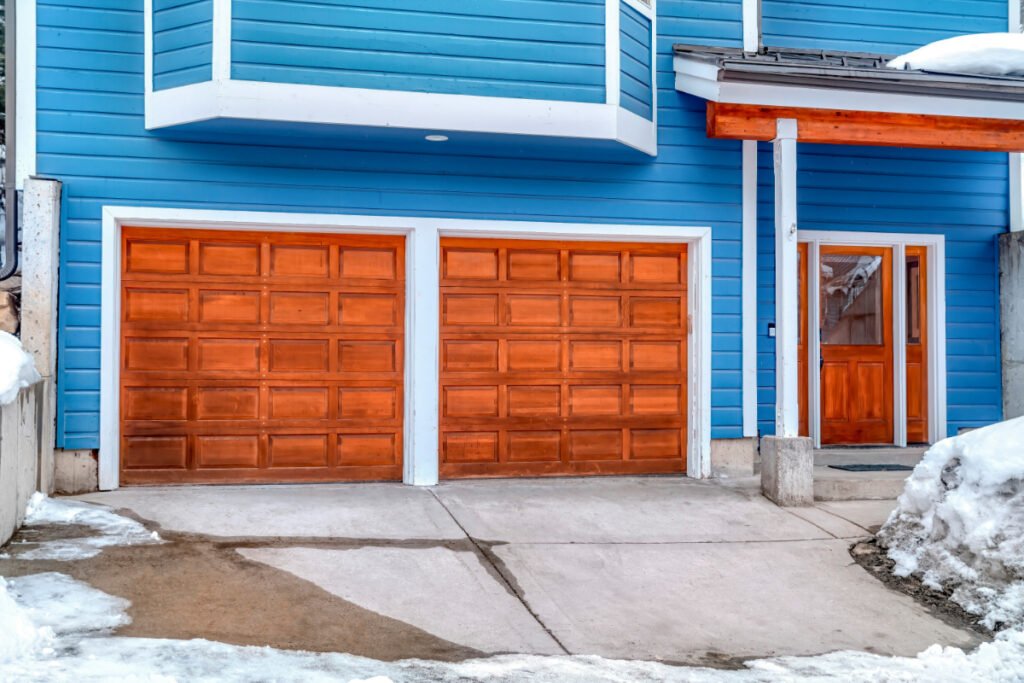
Wooden garage doors are sound-proof and dust-proof but require different climate and moisture control insulation. Generally, carriage-style doors balance the extra weight of heavier insulations. Still, if you have an overhead door, it’s better to use lightweight reflective insulation after verifying with the overhead door company.
Here, you have two options. First, you can sandwich the insulation between two layers of wooden door panels or spray foam or cellulose insulation on the front face of your garage door.
However, remember that sandwiched doors might be heavy and put extra pressure on your opener, whereas sprayed insulations might lose their level and drip down after some time. So, choose the insulation type that is most convenient for you.
Can You Insulate A Steel Garage Door?
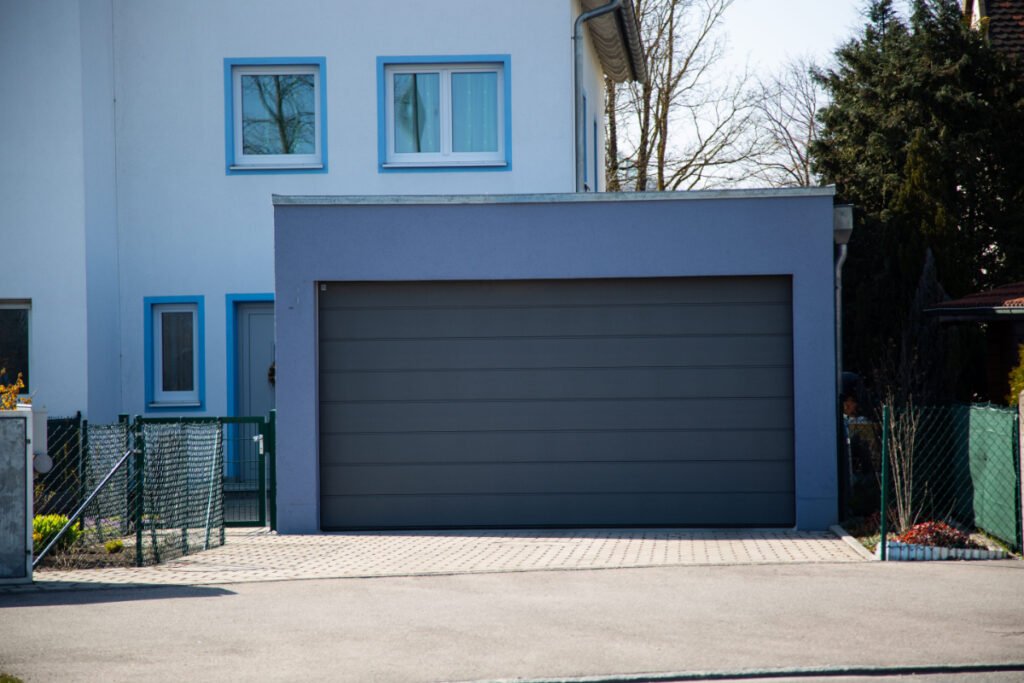
Yes, steel garage doors are steel and multi-layered. Hence, you can add insulation between their panels or clad them with faux wood for added moisture control. Such a sandwiched insulated garage door will look sober and finished and protect the steel from corrosion, dents, cracks, and heat.
Can You Insulate A Roll-Up Garage Door?
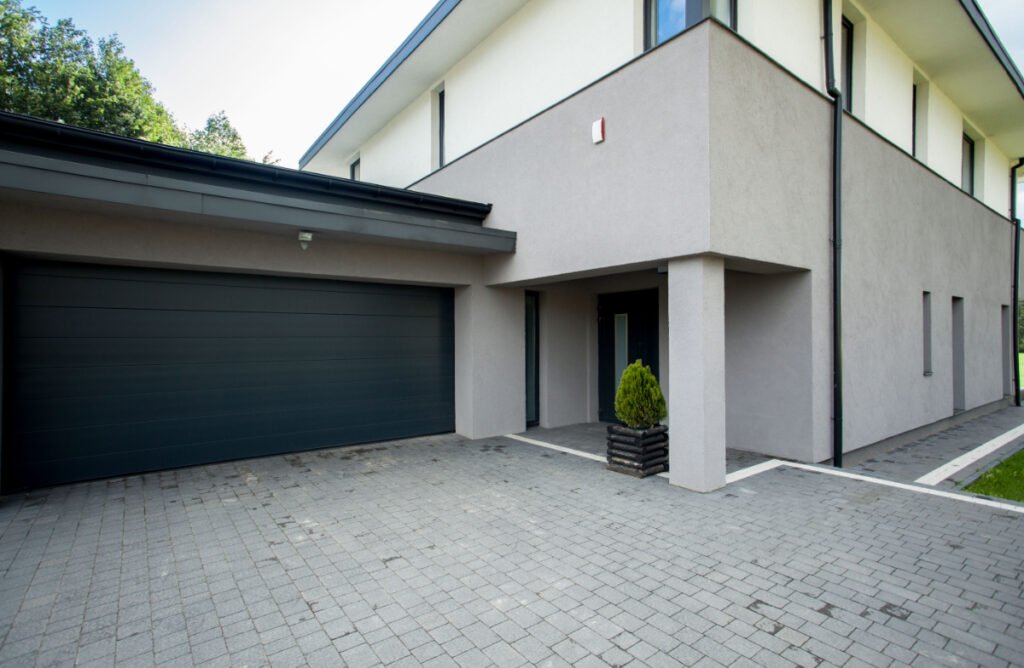
Roll-up garage doors are tricky to insulate since their rolling operation puts extra pressure on insulating materials and causes them to break easily. However, you can coat the inner side of the door with a polyester coating and add sleek, thermal break sheets for temperature control.
Should You Use A Garage Door Insulation Kit?
Garage door insulation kits are quick DIY kits that offer standard insulation panels, tools, and fasteners, saving you from all the cutting and furnishing.
They usually come in two variants, fiberglass and rigid foam insulations for detached and attached garages separately. Moreover, they have a high R-value and will easily insulate a 16-foot wide garage door.
Alternatively, you can even buy pre-cut polystyrene panels from any home dept and push them in between the rails of your wooden garage doors as a low-cost option.
How Do You Insulate Your Garage Door Efficiently?
Insulating the garage door is not at all a difficult task. All you need is the proper insulation, some cutting boards, cutters, fasteners, and gloves, and you’re all set. Then, follow the procedure given below and have a well-insulated door in no time.
- Mark the positions of the fasteners using a dark charcoal pencil or pen. They should be at least 12 inches away from the edge and vertically centered.
- Stick a large piece of double-sided tape, about 1 inch long, to these marked spots, move the front cover, and clip your fastener.
- Now, measure each door panel accurately, and cut your insulation according to it. Wear gloves and safety glasses to prevent the insulation from sticking to your skin.
- Slide each insulation piece between your panels and peel off the excess insulation. Always keep the reflective side facing outwards to help reflect more heat.
- Now, slit the insulation at the points where you have your fasteners, and press the retention clips onto them for greater stability.
Tips For Good Garage Door Insulation
- Pick denser polyurethane insulation (rigid foam) to create a soundproof door for garage workshops and activity spaces.
- After adding the insulation, always get the spring tension tested by any garage door repair professional to ensure that it does not burden your opener.
- Always tape the fasteners to the insulation using good-quality adhesive tape for better support and strength.
- It’s advisable to add proper insulation only if you have an attached garage that buffers the living space from the surroundings. If you have a detached garage, you could just add foam board panels that protect you from heat and sound.
How Much Does It Cost To Insulate Any Garage Door?
While the insulation cost primarily depends on the insulating material, materials like spray foam and rigid foam (2$ per square foot) are much more expensive to purchase and install. At the same time, fiberglass insulators are comparatively cheaper (0.5$ per square foot). Hence, the total garage door insulation cost might vary from 300$ to 900$.
How Thick Should The Garage Door Insulation Be?
Garage door insulation needs to be about ½” to 1” thick for greater efficiency and moisture control without burdening the opener.
Should You Insulate The Door Of An Unconditioned Garage?
You can insulate the door of any unconditioned garage only if all the air gaps, studs, walls, and ceilings have the same insulation. However, if you have a louvered garage, insulating the door won’t make any difference.
Which Is The Cheapest Garage Door Insulation?
Fiberglass batts are the least expensive garage door insulators and will cost about $0.5 – $1 per square foot.
Insulated garage doors are a smart and inexpensive way to maintain an optimal temperature in garages and keep moisture and air leaks at bay! So, find the best type of insulation for your garage door using this guide. And for even better protection, you can add a garage door bottom seal! Join me to learn about its types, uses, and other cool tips!

